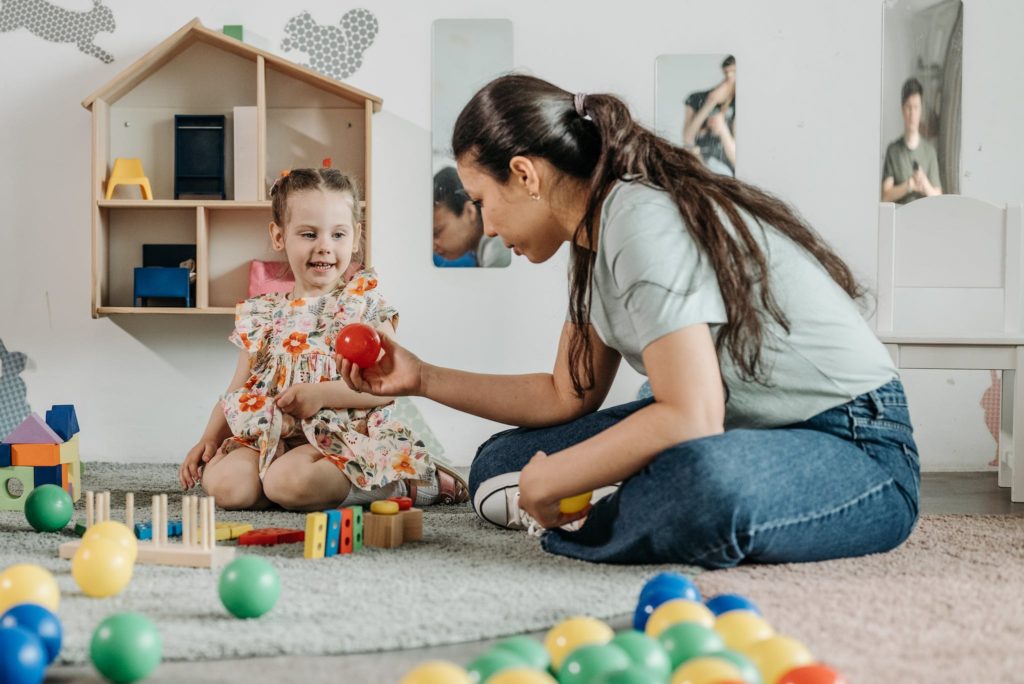Exploring: Can You Homeschool Without a Curriculum?
Are you considering homeschooling but feeling hesitant about following a structured curriculum? You’re not alone.
Many families are discovering the benefits of homeschooling without a formal curriculum, exploring alternative approaches to education.
By embracing real-world learning experiences and utilizing various resources, parents can create a rich and engaging educational environment for their children.
Key Takeaways:
- Homeschooling without a curriculum is a viable alternative to traditional schooling.
- Parents can foster self-directed learning and child-led education in a curriculum-free homeschooling approach.
- Language arts, math, science, and history can be taught through real-world applications and engaging activities.
- Homeschooling without a curriculum allows for flexibility, individualized learning, and personalized education.
- Embracing the world as a curriculum enables immersive learning experiences.
The Benefits of Homeschooling Without a Curriculum
When it comes to homeschooling, there is a growing movement towards curriculum-free education.
This approach, often referred to as self-directed learning or child-led education, offers a range of benefits for both children and parents.
One of the main advantages of homeschooling without a curriculum is the opportunity to foster self-directed learning.
Instead of following a predetermined set of lessons and assignments, children are encouraged to explore their interests and passions.
This not only helps them develop a love for learning but also nurtures their natural curiosity and sense of ownership over their education.
Without the constraints of a structured curriculum, children can delve deep into subjects that truly captivate them.
They can pursue their own research, dive into hands-on projects, and engage in real-world experiences that bring their education to life.
This level of flexibility allows for personalized learning that caters to each child’s unique strengths, interests, and learning style.
Advantages of homeschooling without a curriculum include:
- Encourages self-directed learning and child-led education
- Fosters a love for learning and a sense of ownership over education
- Allows for personalized learning tailored to each child’s interests and learning style
- Promotes exploration, curiosity, and deep understanding of subjects
- Provides flexibility to adapt learning methods and resources
So, homeschooling without a curriculum offers a wealth of benefits, including self-directed learning, child-led education, and personalized learning experiences.
By embracing this approach, parents can create a rich and engaging educational environment that nurtures their children’s love for learning and allows them to flourish.
Language Arts and Homeschooling Without a Curriculum

When it comes to homeschooling without a formal curriculum, language arts can still be effectively taught through a real-world approach.
By embracing a more organic and personalized learning experience, children can develop their reading and writing skills in a meaningful and enjoyable way.
One way to enhance language arts learning is through engaging in activities such as pen pals. This allows children to practice their writing skills while also fostering connections with others.
Reading books together as a family is another fantastic way to cultivate a love for literature and expose children to different writing styles and genres.
In addition to these activities, encouraging children to participate in writing projects can further develop their skills.
From writing stories and poems to creating their own newsletters or blogs, these projects provide opportunities for self-expression and creativity while honing their writing abilities.
By incorporating these real-world activities into the homeschooling journey, parents can nurture a love for language arts and help their children become proficient readers and writers.
Math and Homeschooling Without a Curriculum

When it comes to homeschooling without a curriculum, teaching math may seem like a daunting task.
However, there are alternative approaches that can make learning math a fun and engaging experience for your child.
By incorporating hands-on activities, games, and real-world applications of math concepts, you can help your child develop a strong foundation in mathematics.
Alternative Approaches to Teaching Math
1. Hands-on Activities: Math is not just about numbers and equations—it can be brought to life through hands-on activities.
Encourage your child to use manipulatives such as blocks, counters, or even food items to explore mathematical concepts.
For example, they can use Legos to learn about multiplication or measure ingredients while baking to practice fractions.
2. Games and Puzzles: Turn math into a game by incorporating educational board games, online math games, or puzzles into your homeschooling routine.
Games not only make learning more enjoyable but also help reinforce math skills in a fun and interactive way.
Look for math games that align with your child’s grade level and learning objectives.
3. Real-World Applications: Show your child how math is relevant to their everyday life by incorporating real-world applications.
For example, involve them in budgeting activities, where they can practice addition, subtraction, and money management.
Take them grocery shopping and have them calculate discounts or practice estimating the cost of items.
By taking these alternative approaches, you can cultivate your child’s mathematical thinking and problem-solving skills without relying on a formal curriculum.
Remember, the goal is not to replicate a traditional classroom setting but to foster a love for math and provide opportunities for practical application.
Homeschooling Science: Embracing Hands-On Experiments

Teaching science without a formal curriculum opens up a world of possibilities for homeschooling families.
By embracing hands-on experiments, children can engage with the scientific method, develop critical thinking skills, and cultivate a love for the subject.
Here are some ideas on how to incorporate hands-on learning into your homeschooling science curriculum:
1. Create a Science Lab at Home
Set up a dedicated space in your home as a science laboratory where your child can perform experiments.
Stock it with basic scientific tools and supplies such as test tubes, beakers, magnifying glasses, and a microscope, if possible.
This lab will become a hub of scientific exploration and discovery, encouraging your child’s curiosity and fostering independent learning.
2. Conduct Simple Experiments
Choose experiments that align with your child’s interests and the scientific concepts you want to focus on.
There are countless online resources and experiment books available that offer step-by-step instructions and explanations.
From investigating the properties of magnets to exploring chemical reactions, hands-on experiments provide concrete experiences that bring scientific concepts to life.
3. Incorporate Nature Studies
Take advantage of the natural world as a living laboratory. Explore your backyard, local parks, or nature trails to observe plants, animals, and ecosystems.
Encourage your child to ask questions, make observations, and document their findings.
Nature studies provide a hands-on way to learn about biology, ecology, and environmental science.
By embracing hands-on experiments and incorporating real-world applications, homeschooling science without a curriculum can be an enriching and exciting educational experience for your child.
Encourage their curiosity, provide them with the tools they need, and watch their love for science grow.
The World as the Curriculum
When it comes to teaching history without a curriculum, one of the most effective ways is to embrace the world as your classroom.
By going beyond textbooks and immersing your child in the rich tapestry of historical experiences, you can foster a deep understanding and appreciation for the past.
One powerful tool in teaching history is through field trips. Exploring historical sites and landmarks allows your child to see, touch, and experience history firsthand.
Whether it’s visiting a museum, walking through a historic battlefield, or touring a colonial village, these immersive experiences bring history alive and make it more tangible.
Another approach is to use historical resources that go beyond traditional textbooks.
Utilize online archives, documentaries, and primary source materials to expose your child to different perspectives and voices from the past.
This broadens their understanding of historical events and encourages critical thinking and analysis.
Embracing a Multidisciplinary Approach
Teaching history without a curriculum also provides an opportunity to integrate other subjects and create a multidisciplinary approach to learning.
For example, you can incorporate literature by reading historical novels or biographies of important figures.
This helps your child connect emotionally with the past and understand the human experiences behind historical events.
In addition, arts and crafts can be used to further enhance the learning experience. Your child can create historical dioramas, draw illustrations of historical scenes, or even write and perform skits based on historical events.
These hands-on activities make history come alive and allow your child to engage creatively with the subject matter.
By embracing the world as the curriculum, utilizing field trips, exploring historical resources, and integrating other subjects, you can create a dynamic and immersive learning experience that fosters a deep understanding and love for history in your child.
Embracing Flexibility and Individualized Learning

When it comes to homeschooling without a curriculum, one of the key advantages is the ability to embrace flexibility and tailor the education to suit the individual needs of your child.
With personalized education, you have the freedom to adapt your approach and resources to meet your child’s unique learning style and interests. This allows for a more engaging and effective learning experience overall.
Individualized learning means that you can focus on your child’s strengths and areas of interest while also providing support and guidance where needed.
You can create a customized curriculum that goes beyond traditional subjects, incorporating real-world experiences, life skills, and personalized projects.
This approach not only helps your child develop a deep understanding of the topics they are passionate about but also nurtures their curiosity and love for learning.
Benefits of Flexible Homeschooling
- Adapting teaching methods to suit your child’s learning style
- Addressing learning gaps in a personalized way
- Encouraging independent thinking and self-directed learning
- Creating a more relaxed and stress-free learning environment
- Allowing for a flexible schedule that fits your family’s needs
By embracing flexible homeschooling, you can provide your child with an education that is tailored to their individual needs and interests.
This personalized approach not only fosters a love for learning but also equips them with the skills and knowledge they need to thrive in the real world.
Overcoming the Fear of Gaps in Education

As homeschooling parents, we often worry about the potential gaps in our children’s education. We wonder if we are teaching them everything they need to know and if they will be prepared for the future.
However, it’s important to remember that everyone, regardless of the educational setting, has gaps in their knowledge. No educational system can cover every topic comprehensively.
Instead of fixating on the idea of eliminating all gaps, we should focus on addressing the most important concepts and providing individualized education.
Homeschooling without a curriculum allows us to tailor our children’s learning experiences to their unique needs and interests.
We have the flexibility to delve deeper into subjects that spark their curiosity and provide additional support in areas where they might struggle.
By embracing individualized education, we can ensure that our children have a solid foundation in the essential subjects while nurturing their passions and strengths.
We can fill any gaps that may arise along the way through targeted learning opportunities, resources, and experiences.
Our role as homeschooling leaders is to guide our children’s educational journey and instill a lifelong love for learning.
The World as the Curriculum

When homeschooling without a curriculum, the world itself becomes your classroom.
By embracing the homeschooling environment as a rich source of learning opportunities, you can provide your children with an immersive and holistic educational experience.
Immersive learning is a key aspect of homeschooling without a formal curriculum. Instead of relying solely on textbooks and predetermined lesson plans, you can encourage your children to explore and engage with their surroundings.
Take them on nature walks to learn about ecosystems, visit local museums to delve into history, or even set up a garden to teach them about plant life.
These real-world experiences not only make learning more meaningful but also nurture a sense of curiosity and wonder.
Cultivating a Sense of Wonder
- Encourage hands-on exploration
- Visit museums, historical sites, and cultural events
- Engage with the local community
By embracing the world as a curriculum, you can tailor your children’s learning experiences to their interests and passions.
If your child loves animals, you can focus on biology and ecology by volunteering at an animal shelter or studying animal behavior in the wild.
If they have a knack for arts and crafts, you can integrate art history and cultural studies by exploring different artistic styles and creating their own masterpieces.
Nurturing Individual Interests
- Identify your child’s passions and strengths
- Design activities that align with their interests
- Encourage interdisciplinary connections
Remember, homeschooling without a curriculum allows you the freedom to customize education and tailor it to your child’s unique learning style.
By embracing the world as a curriculum, you can provide your children with a well-rounded education that goes beyond traditional textbooks, fostering a love for lifelong learning.
Embracing Your Role as the Homeschooling Leader

As a homeschooling parent, I have discovered the joy of being the leader of my children’s education.
Without the constraints of a formal curriculum, I have the freedom to tailor their learning experiences to their unique interests and needs.
Taking control of education has allowed me to create a customized learning journey that truly resonates with my family.
Being a homeschooling leader means I can choose the teaching methods and resources that align with my children’s learning styles.
Whether it’s hands-on activities, interactive online programs, or engaging books, I have the flexibility to adapt and experiment until I find what works best for them.
This customized approach ensures that my children remain engaged, motivated, and excited about learning.
One of the greatest advantages of being a homeschooling leader is the ability to create a learning environment that reflects our family’s values and interests.
We can explore topics that are personally significant, delve into subjects that ignite curiosity, and incorporate real-life experiences into our lessons.
By embracing this level of customization, I can nurture my children’s love for learning and provide them with a well-rounded education.
Taking control of education also means I can set the pace of learning. If my children need extra time to grasp a concept or want to dive deeper into a particular subject, I can accommodate their needs.
Likewise, if they quickly grasp a concept and are hungry for more, I can provide additional resources and challenges to keep them engaged. This personalized approach ensures that my children can learn at their own pace and explore their full potential.
FAQ
Can you homeschool without a curriculum?
Yes, homeschooling without a formal curriculum is a viable option for families looking for alternatives to traditional schooling.
What are the benefits of homeschooling without a curriculum?
Homeschooling without a curriculum allows for self-directed learning and child-led education, fostering a love for learning and a sense of ownership over education.
How can language arts be taught without a formal curriculum?
Language arts can be taught by adopting a real-world approach, such as engaging in reading books, writing projects, and pen pals, to develop reading and writing skills.
Is it possible to teach math without a formal curriculum?
Yes, math education can be achieved by incorporating hands-on activities, games, and real-world applications of math concepts to develop a strong foundation.
How can science be taught without a curriculum?
Science can be taught through hands-on experiments, engaging games, and immersive experiences that encourage curiosity and observation of the natural world.
Can history be taught without a formal curriculum?
Yes, history can be taught by utilizing field trips, historical resources, and engaging activities to make history come alive and develop a rich understanding of the world’s history.
Is individualized learning possible without a curriculum?
Yes, homeschooling without a curriculum allows for flexibility and individualized learning, where parents can adapt teaching methods and resources to meet their children’s unique needs and learning styles.
How can homeschooling address potential gaps in education?
By focusing on essential concepts and providing individualized education, parents can ensure their children have a solid foundation and overcome any potential learning gaps.
Can the world itself be a curriculum for homeschooling?
Yes, embracing homeschooling without a curriculum means recognizing that the world is a curriculum, allowing children to learn from people, places, and experiences they encounter in their everyday lives.
How can parents embrace their role as homeschooling leaders?
By taking control, customizing learning experiences, and embracing the freedom of homeschooling without a curriculum, parents can create a unique and fulfilling educational journey for their family.







